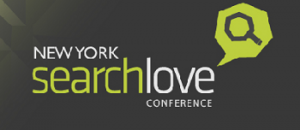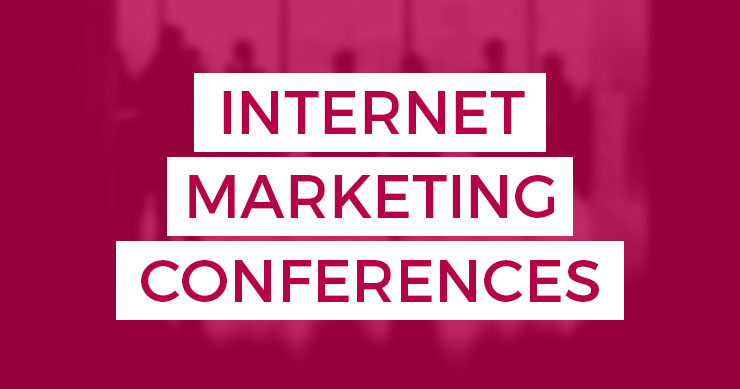 Okay, break’s over. Everyone good and caffeinated? I think I’ve already had a bit too much coffee this morning judging by the way my hands are twitching. But that’ll just help me type faster, right? Right. Besides, we all needed a bit of a boost so we can keep up with the next speaker, Rand Fishkin. If anyone knows how to build a community, it’s Rand. If you want to garner fans of your own, or help your clients do it, listen up. You don’t want to miss this.
Okay, break’s over. Everyone good and caffeinated? I think I’ve already had a bit too much coffee this morning judging by the way my hands are twitching. But that’ll just help me type faster, right? Right. Besides, we all needed a bit of a boost so we can keep up with the next speaker, Rand Fishkin. If anyone knows how to build a community, it’s Rand. If you want to garner fans of your own, or help your clients do it, listen up. You don’t want to miss this.
Rand is going to tell us why community rocks so hard.
First, he shows a Berlitz ad. It cracks everyone up [and I particularly enjoy it, being trilingual :-)]
Rand asks, Does anyone get half a million dollars for their SEO budget for a week? No. Unless you’re running a link buying campaign. (groans from the audience.)
Why do marketers pay these insane prices? Either advertisers are crazy to be spending this money, or there’s something going on. Maybe something’s working.
Yeah, because if you expose people to a brand multiple times, you get familiarity. It builds an associaiton. What does this brand mean, why does it exist, what is it about? Banner ads still work because recall gets better every time people see them.
Those advertisers aren’t crazy…they’re crazy like a fox! And Rand eats those for breakfast!
Then he mentions Justin Bieber and shudders. Yeah, me too. The thing is, he’s a good marketer of himself.
Our fans love us because we’re what they love—we’re building an authentic community. All of us who do this work. We do it through building true, passionate communities. The reasons Rand loves community and what it can do for every brand. He encourages every brand to get community.
One of the toughest facets of SEO is linkbuilding. It’s incredibly hard. Know how SEOmoz gets links? They have buttons. It says give me 500 links. No, it actually says “publish.” (See what he did there?) This is true for every community on the Web that has users who thrive in that community. It should be replicated.
If you want to go viral and you are unknown, but you’re producing incredible quality content, your ratio to achieve virality need sto be so much higher than someone with an established community because community makes virality happen.
Rand says this feels like the future to him.
Successful communities grow organically. As a network expands, it gets easier to expand the network. A community is built on a network effect. Going from 4,000 Twitter followers to 10K tooka bout 6 months. Grows at scale, and it rolls downhill.
Advertisers pay millions of dollars to earn the trust and the association of familiarity. You can get it as a result of being a part of a community. Community lets you influence all the influencers all in one place.
If you want to build an online community, you have a few options. Simple stuff like blogs, q&a platforms, curations hubs (like Pinterest), social networks, social news sites where there’s voting, content platforms (like Slideshare, Vimeo).
Which one is right for you? Simple answer: most of the time you should start with a blog. Even if you’re a large brand, you should start building a community around a blog. It’s familiar. If you try to use anything else, you’re going to find yourself in an empty, vacant hole.
Tips to Start a Community
- Don’t do what barbiegirls.com did. Lot of articles written about how it was a big failure. It actually scared other brands away from building communities. It wasn’t built to be a community. It was built to sell Barbies. Imagine if Zuckerberg had built Facebook to steal your private data and sell it to advertisers. If that’s how you start, you’re going to die. You have to go in thinking differently.
Avinash Kaushik is quoted again (if you’re not following him, you need to): “You need to make your customers orgasm before you do.”
You want your community to be happy, and then find the things that overlap naturally.
He pulls out a Kennedy quote, revised: “Ask not what your community can do for you, but what you can do for your community.”
Features should meet both user and site goals. Gives the example of minted.com. Make the designers successful, and everything else will flow from that.
- Find early adopters and get their input. Make sure they feel like you’re reaching out and connecting with them personally. That will get a lot of people coming back to the community. Try to target niche. level industry experts (i.e., big names). Those people get a lot of requests like that. Aim for the people who are well known in niches, have a few thousand followers, and haven’t been approached by big brands. Those are the people who are easier to reach.
- Start small; don’t launch an empty wasteland. It will drive people away.
- Seed internally or pay for community help. Contract out for it, put an ad on Craigslist, there are companeis that will put you in touch with those early adopters you want to target. Once they stary building your content, your community will grow.
- Get ready for a lot of work. Theose first few hundred hours will feel like all work and no reward. A lot of people give up, but they’re the ones who make it worthwhile. It’s the not giving up that makes community work.
- Create awareness outside your site. It doesn’t all have to come from your own site.
- Make profiles a point of pride. Give people something to link to. Dribbble is a good example of this. It creates a little icon that points back to your own site.
- Never let the community feel empty. He shows a screenshot of a Mahalo page, with a post with no comments. “Why are they not paying anyone to comment?!”
- Reward contributers disporportionately. When people do great things for the SEOmoz community (tweeting, doing their own Whiteboard Friday), we’ll send them things, including tickets to events. And then they’ll tell people in their communities about it, which in turn brings more people to our community.
- Analyze content and contributions that bring the most signups
- Identify and recruit forsaken contributers from other communities. Find communities that don’t reward their contributers, and recognize them for their contributions. Invite them to be part of your community. Give them the reasons why they should. This poaching technique is phenomenal because people want to be recognized.
A few more important tips:
12 kickass tips for community building
- Write about other community and personalities to bring them to your site
- Name-drop in titles for Google Alerts referrals; people can’t resist looking at something that mentions them; doing it negatively isn’t generally advised
- Get contributions to yoru content from major industry players; e-mail and Twitter both work; ask people to take surveys; ask for their opinions; share the data and note their contribution; they’ll link to it
- Use social signals as “points” in your gamification; tweeting or sharing brings rewards
- Create a “common enemy;” motivates people to become more invested in your community; Rand’s most RT’d tweet of all time was on a weekend, and came from Martin McDonald to sign a petition about Google’s decision to remove data from logged in keyword searches
- Build smart notification systems; Facebook and Google Plus are good examples
- Invitation-only is a powerful motivator; Pinterest is an invite-only model; it’s a barrier to entry that correlates to higher usage
- Help your members become social participants; create a guide for your users to familiarize them with your site, service, etc.
- Publish a single, popular, canonical feed of your content; Google and Bing both pick up feeds
- Get your community searching with particular phrasing and you can influence suggest and instant; a little controversial; get a few hundred people to search for a particular thing; you could do evil, black hat things with this; don’t do that!; get your community to search for your brand with a generic term
- Bolster thin content pages by pulling community content that exists externally; there may be discussion on Facebook; use a plugin to direct it to your domain
- Give users the power to share/embed/re-use what they create for you on their own sites
The reason this works so well is because it’s a virtual cycle. The last slide had a great graphic that links everything together. Maybe I need to start taking photos while I’m liveblogging. Yeah, and maybe I can get a third hand, too.

